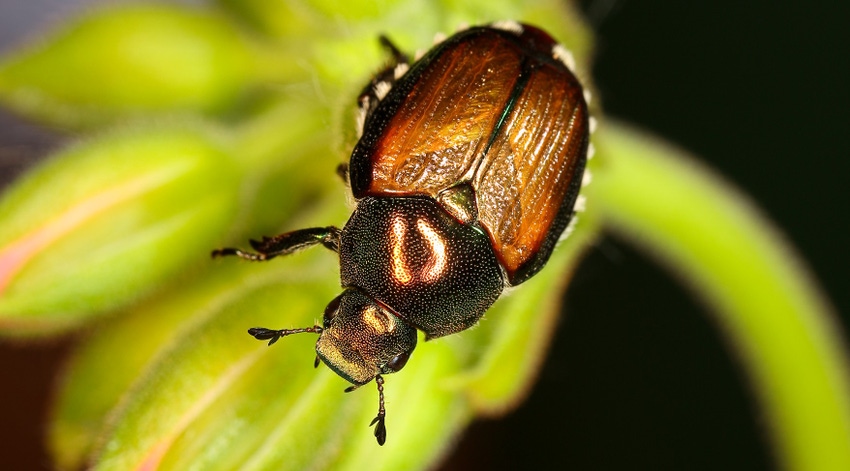July 25, 2023

A single Japanese beetle has been found in Pasco, Wash., about 50 miles east of where the Washington State Department of Agriculture has been trapping for the destructive pest.
A Franklin County Horticultural Pest and Disease Board trapper found the beetle and state officials responded to the catch, verified the beetle, and set up a delimiting trapping grid around the find.
“This is an excellent example of just how important agency collaboration is,” Camilo Acosta, WSDA Japanese beetle eradication project coordinator, said.
The trap produced a single beetle. WSDA teams began immediately setting up additional traps and checking nearby nurseries for additional detections.
“A single beetle is less cause for concern because one beetle can’t reproduce,” Acosta said. “But we need to be sure there are not more. Last year, a single beetle was found in Richland, but extensive trapping in the area did not detect additional beetles.”
State officials urge anyone in Yakima, Benton or Franklin counties to look for and report these beetles. Growers can consult crop protection specialists and community members can consult WSDA’s website for guidance from Washington State University Extension on protecting their gardens from this invasive pest. WSDA mapping specialists created a real-time detection map that growers can use to determine how close they are to known Japanese beetle detections.
Japanese beetle adults are metallic green and brown and have little tufts of white hair on their sides. They emerge – usually from lawns or in other soil – and feed on more than 300 types of plants. From fall to spring the grubs (larvae) overwinter in the soil and slowly develop into mature adults ready to emerge again the next year in the summer as temperatures warm.
Hitchhikers
Adult beetles can hitchhike on vehicles and on items stored outdoors. When adult beetles are flying, those who live in or visit the quarantine area should take a second to ensure they are not giving a free ride to beetles when they leave the area. This can be as simple as checking the back of your pick-up truck to ensure that no beetles are taking advantage of a free ride.
WSDA’s goal is to eradicate this introduction of Japanese beetle to protect Washington’s farms, lawns, parks and gardens. However, if eradication is possible, it will take several years. Each summer, WSDA will conduct extensive trapping to determine the number and location of the beetles. In the fall and winter, the agency uses the summer trapping information to prioritize eradication efforts the following spring.
In 2020, WSDA first discovered just three Japanese beetles in the Grandview area. In 2021, the department trapped more than 24,000 beetles, and in 2022, trappers caught A little less than 24,000. So far this year, teams have caught about 6,600 beetles. Japanese beetles are highly invasive pests of more than 300 plants, including roses, grapes and hops. Adult beetles damage plants by skeletonizing the foliage. Adults also feed on buds, flowers and fruit on the plants and are frequently intercepted with air cargo from the Eastern U.S.
If Japanese beetle becomes established in the area, it could have significant impacts on gardens and yards, parks and farms as well as farmers’ ability to move agricultural products out of the area.
Source: Washington State Department of Agriculture
About the Author(s)
You May Also Like






